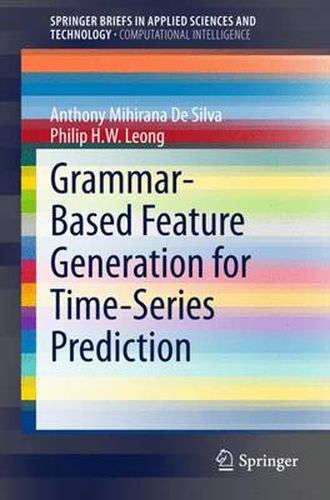Readings Newsletter
Become a Readings Member to make your shopping experience even easier.
Sign in or sign up for free!
You’re not far away from qualifying for FREE standard shipping within Australia
You’ve qualified for FREE standard shipping within Australia
The cart is loading…






This title is printed to order. This book may have been self-published. If so, we cannot guarantee the quality of the content. In the main most books will have gone through the editing process however some may not. We therefore suggest that you be aware of this before ordering this book. If in doubt check either the author or publisher’s details as we are unable to accept any returns unless they are faulty. Please contact us if you have any questions.
This book proposes a novel approach for time-series prediction using machine learning techniques with automatic feature generation. Application of machine learning techniques to predict time-series continues to attract considerable attention due to the difficulty of the prediction problems compounded by the non-linear and non-stationary nature of the real world time-series. The performance of machine learning techniques, among other things, depends on suitable engineering of features. This book proposes a systematic way for generating suitable features using context-free grammar. A number of feature selection criteria are investigated and a hybrid feature generation and selection algorithm using grammatical evolution is proposed. The book contains graphical illustrations to explain the feature generation process. The proposed approaches are demonstrated by predicting the closing price of major stock market indices, peak electricity load and net hourly foreign exchange client trade volume. The proposed method can be applied to a wide range of machine learning architectures and applications to represent complex feature dependencies explicitly when machine learning cannot achieve this by itself. Industrial applications can use the proposed technique to improve their predictions.
$9.00 standard shipping within Australia
FREE standard shipping within Australia for orders over $100.00
Express & International shipping calculated at checkout
This title is printed to order. This book may have been self-published. If so, we cannot guarantee the quality of the content. In the main most books will have gone through the editing process however some may not. We therefore suggest that you be aware of this before ordering this book. If in doubt check either the author or publisher’s details as we are unable to accept any returns unless they are faulty. Please contact us if you have any questions.
This book proposes a novel approach for time-series prediction using machine learning techniques with automatic feature generation. Application of machine learning techniques to predict time-series continues to attract considerable attention due to the difficulty of the prediction problems compounded by the non-linear and non-stationary nature of the real world time-series. The performance of machine learning techniques, among other things, depends on suitable engineering of features. This book proposes a systematic way for generating suitable features using context-free grammar. A number of feature selection criteria are investigated and a hybrid feature generation and selection algorithm using grammatical evolution is proposed. The book contains graphical illustrations to explain the feature generation process. The proposed approaches are demonstrated by predicting the closing price of major stock market indices, peak electricity load and net hourly foreign exchange client trade volume. The proposed method can be applied to a wide range of machine learning architectures and applications to represent complex feature dependencies explicitly when machine learning cannot achieve this by itself. Industrial applications can use the proposed technique to improve their predictions.